 EN
EN
 PT
PT
Quick guide for teachers - Lower Secondary School
Product: Book
Trim size in cm: 14x21cm
Pages: 128
ISBN: 9788859034131
Publication date: 01/11/2023
Suitable for: Lower secondary 1st level (ages 10-11), Lower secondary 2nd level (ages 12-13)
REQUEST A SAMPLE OR MORE INFORMATION
 Rights sold to:
Brazil, Ukraine, Arabic language worldwide, Czech Republic
Rights sold to:
Brazil, Ukraine, Arabic language worldwide, Czech Republic
In the style of a Teacher Training notebook, the book Bullying – What to Do and What to Avoid offers useful suggestions and “ready-to-use” indications to address the problem of bullying in the classroom.
What to do and what to avoid
At the beginning of each chapter, the reason for the behavior is explained with a few short sentences (Why does he/she do this?), followed by indications on the strategies to adopt (What to do) and which ones to avoid (What to avoid). Furthermore, insights, tools and strategies (What to keep in mind) on how to intervene are provided.
Presentation
Introduction
● THE BULLY
o He/she has abusive behavior
o He/she feels better if others suffer
o He/she doesn't perceive their own actions as a problem
o He/she doesn't communicate adequately
● THE VICTIM
o He/she feels guilty for his/her actions
o He/she appears passive and submissive
o He/she has provocative attitudes
● THE GROUP
o Supports the bully
o Is a silent spectator
o Defends of the victim
● THE CONTEXT
o Teachers who “don't see the problem”
o Parents who “slack off”
Appendix
Bibliography

Quick guide for teachers
Lower secondary school
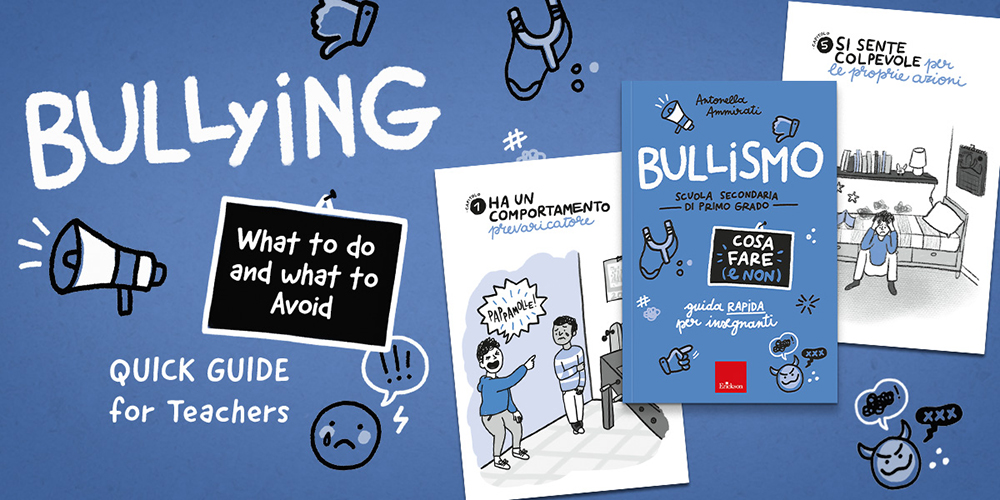
Bullying is an aggressive, repetitive, and intentional behavior that aims at physically, verbally or psychologically harm a weaker or vulnerable person.
In the style of a Teacher Training notebook, Bullying: What to Do and What to Avoid is a practical guide for secondary school teachers on how to deal with problematic behaviors typical of the bullying phenomenon in the classroom, suggesting what to do and what, instead, to avoid.
BOOK STRUCTURE AND CONTENTS
The volume is divided into four macro-topics that present the bully, the victim, the group and the context:
WHAT TO DO AND WHAT TO AVOID
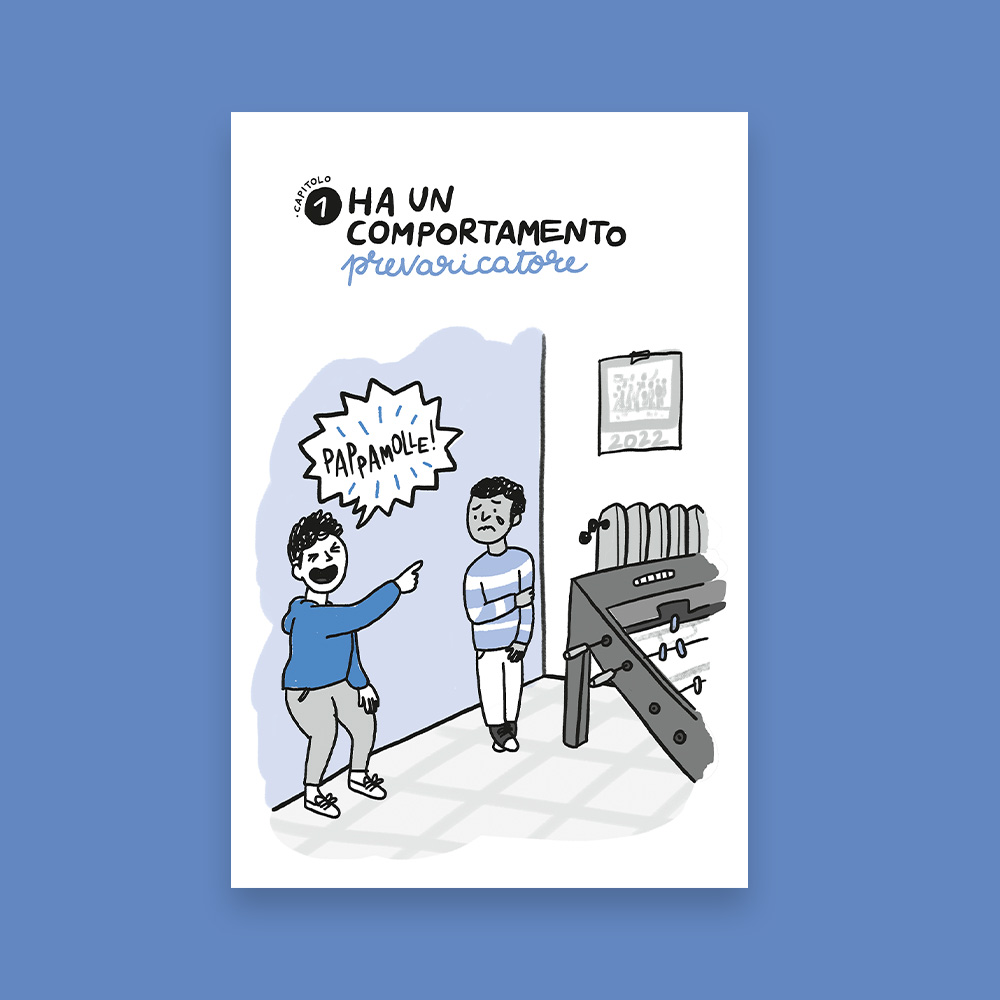
At the beginning of each chapter, a drawing introduces the analysed behaviour.
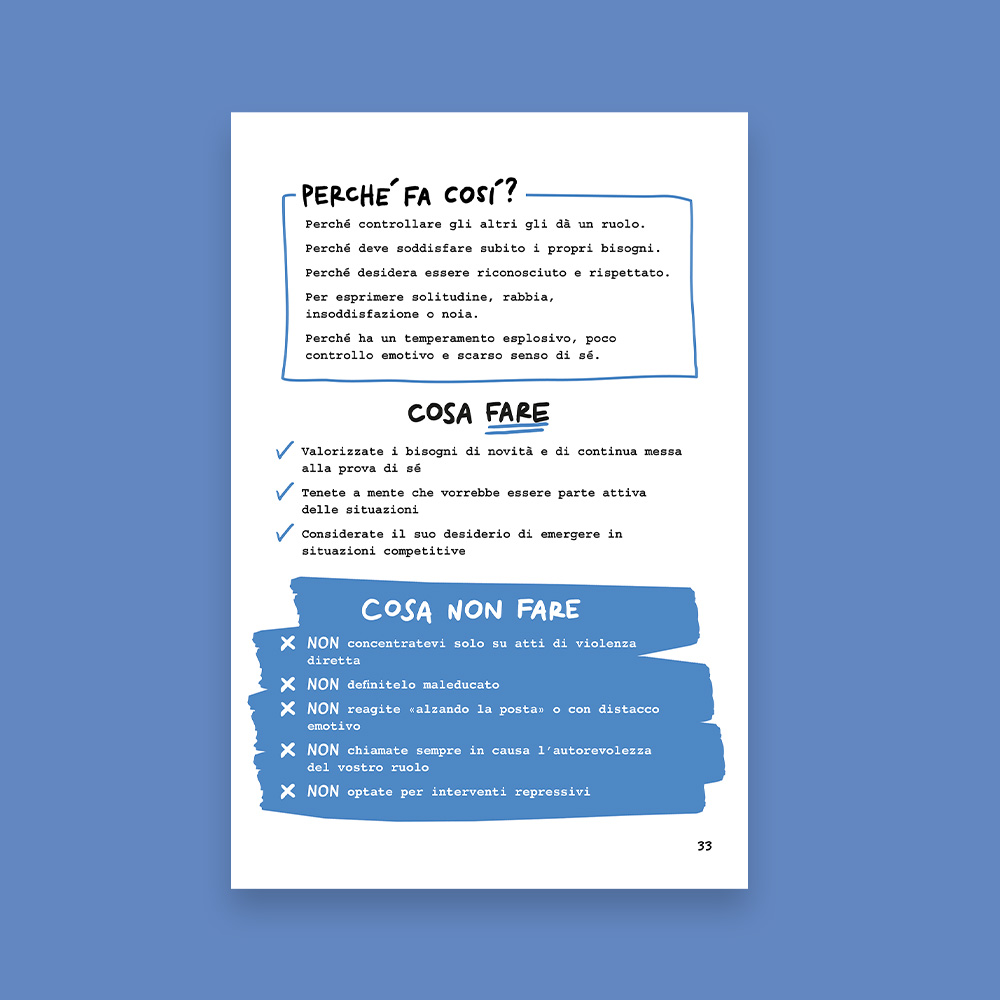
• Explanations of the problem behaviour being considered: Why does he/she do this? • Brief and simple indications that can be useful to the teacher as a reference point for quickly deciding What to do and reflect on What to avoid.
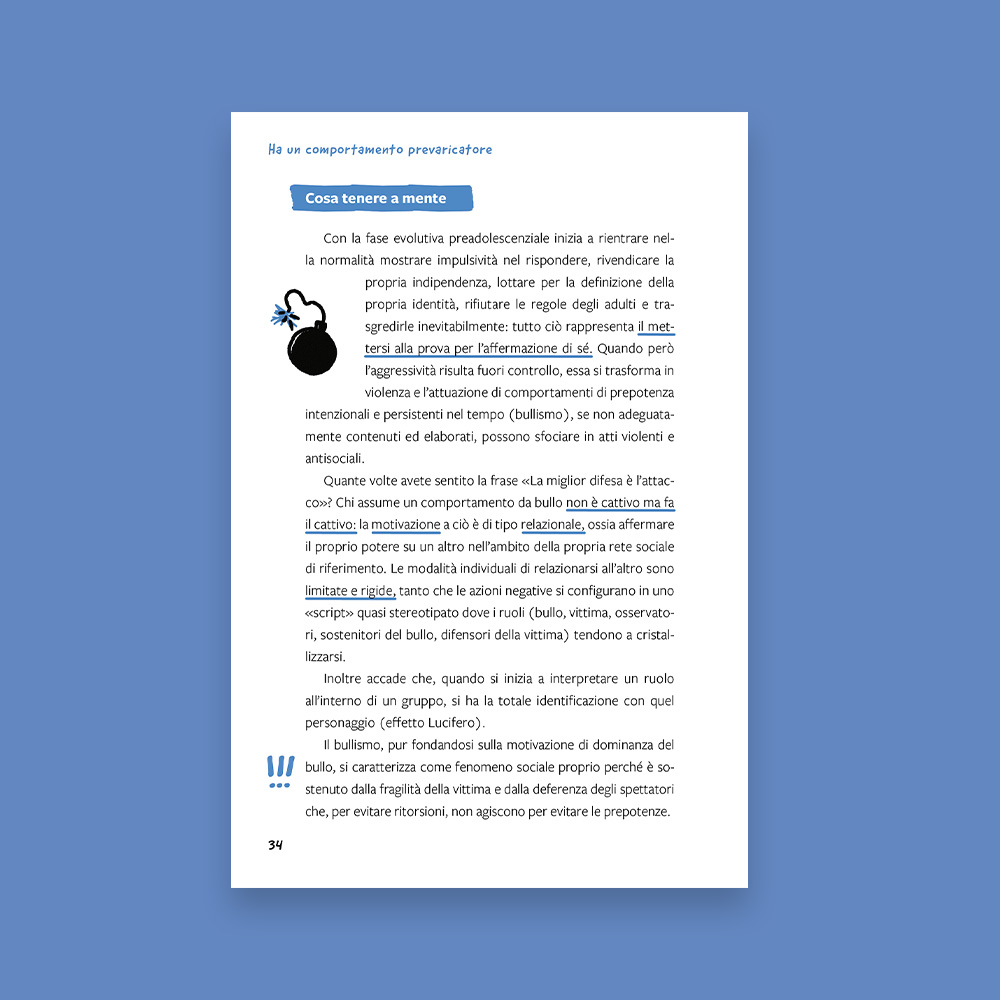
• A more in-depth description of the specific problem behaviourbeing worked on: Analysis of the problem behaviour. • The tools and educational strategies to create the intervention: How to intervene.
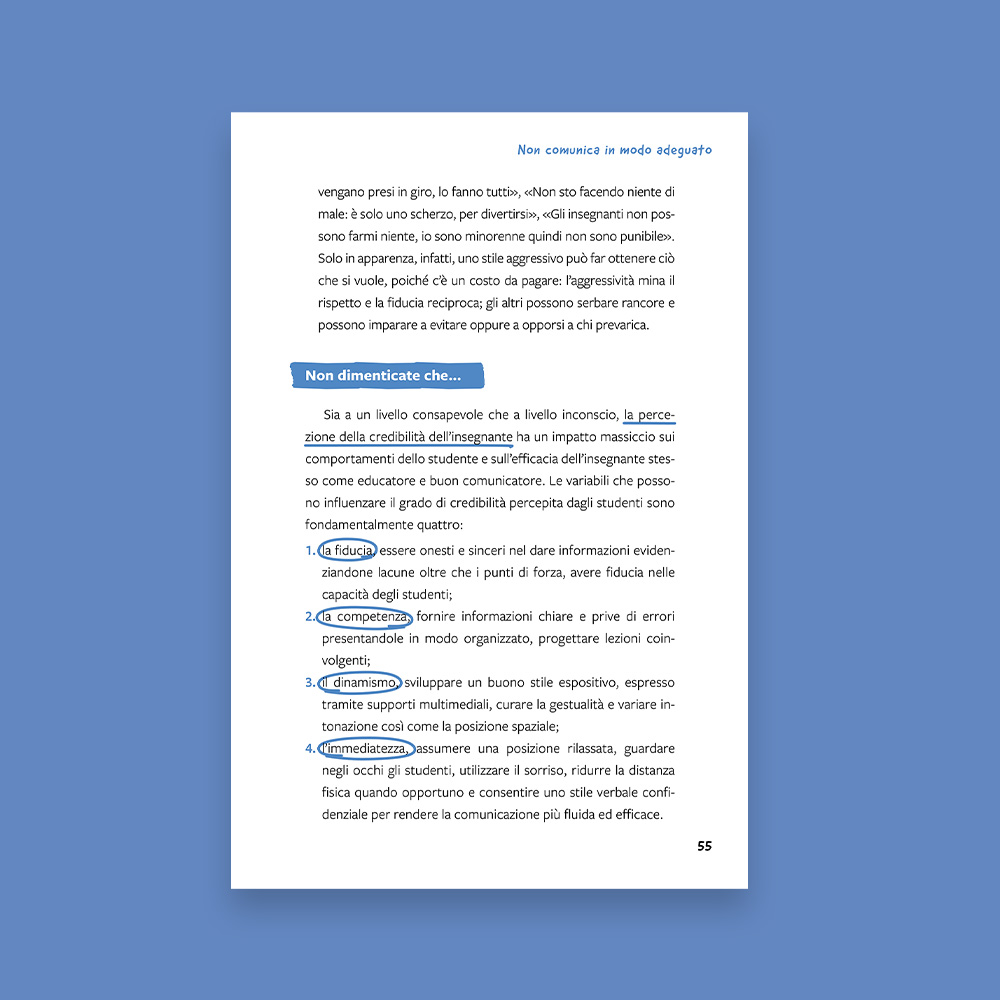
Each chapter closes with The expert advice: reflections to further understand and enrich the teacher’s “briefcase of educational tools”.
Leaf through some pages of volume which have been translated into English to facilitate your evaluation of the product.
THE AUTHOR
Antonella Ammirati Neuropsychologist and psychotherapist with a psychodynamic focus, and freelancer between clinical practice and school. She has a decade-long collaboration with ODFlab – Department of Psychology and Cognitive Sciences of the University of Trento, where she specialized in diagnosis and intervention of developmental and adult disorders.